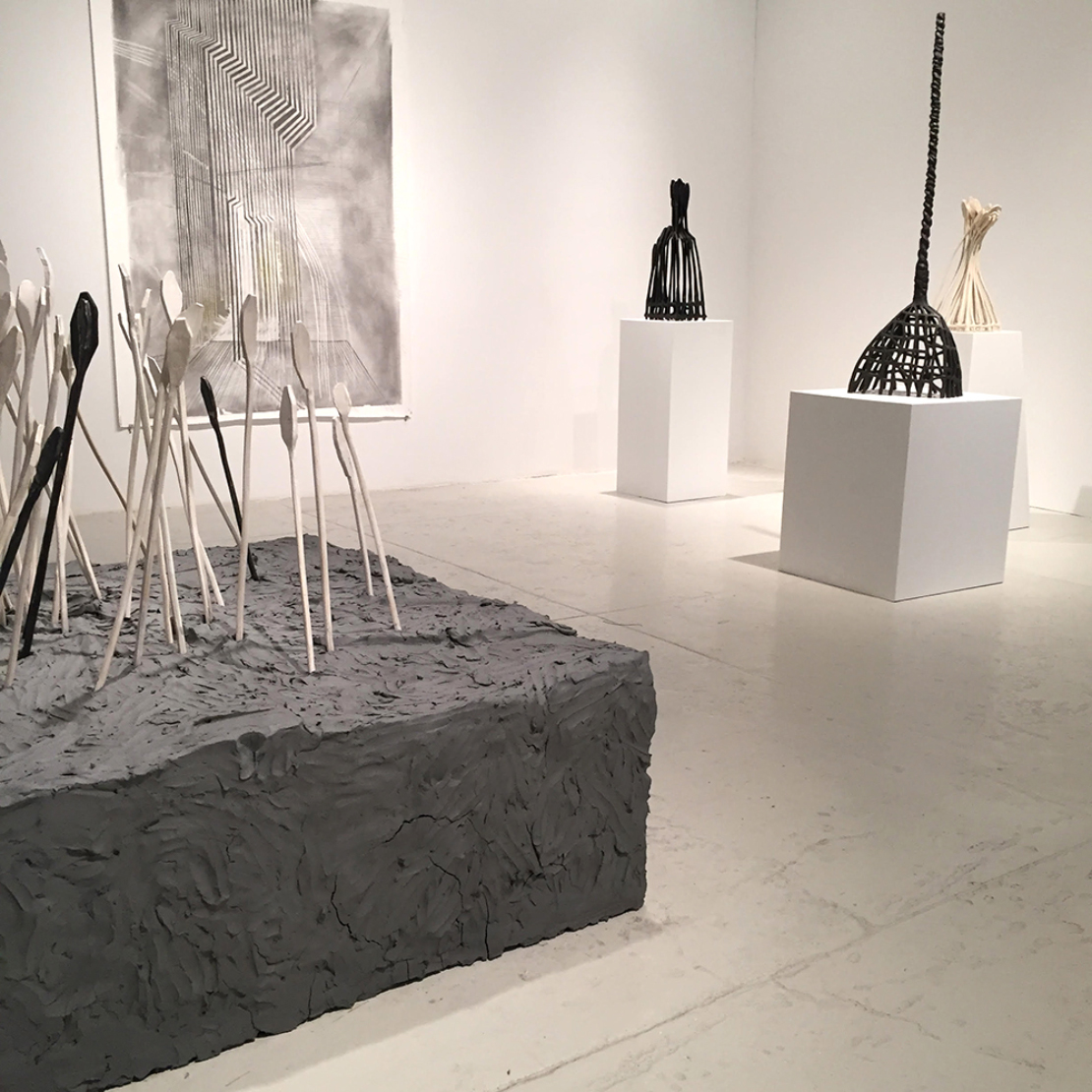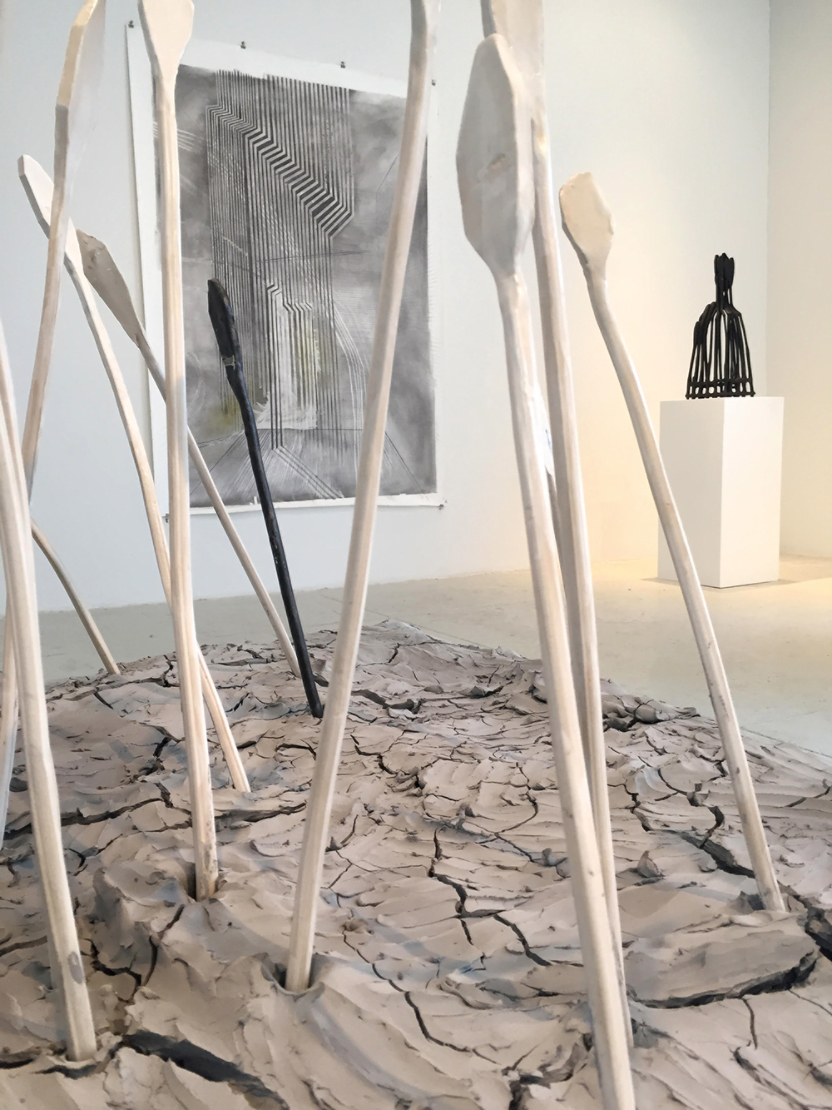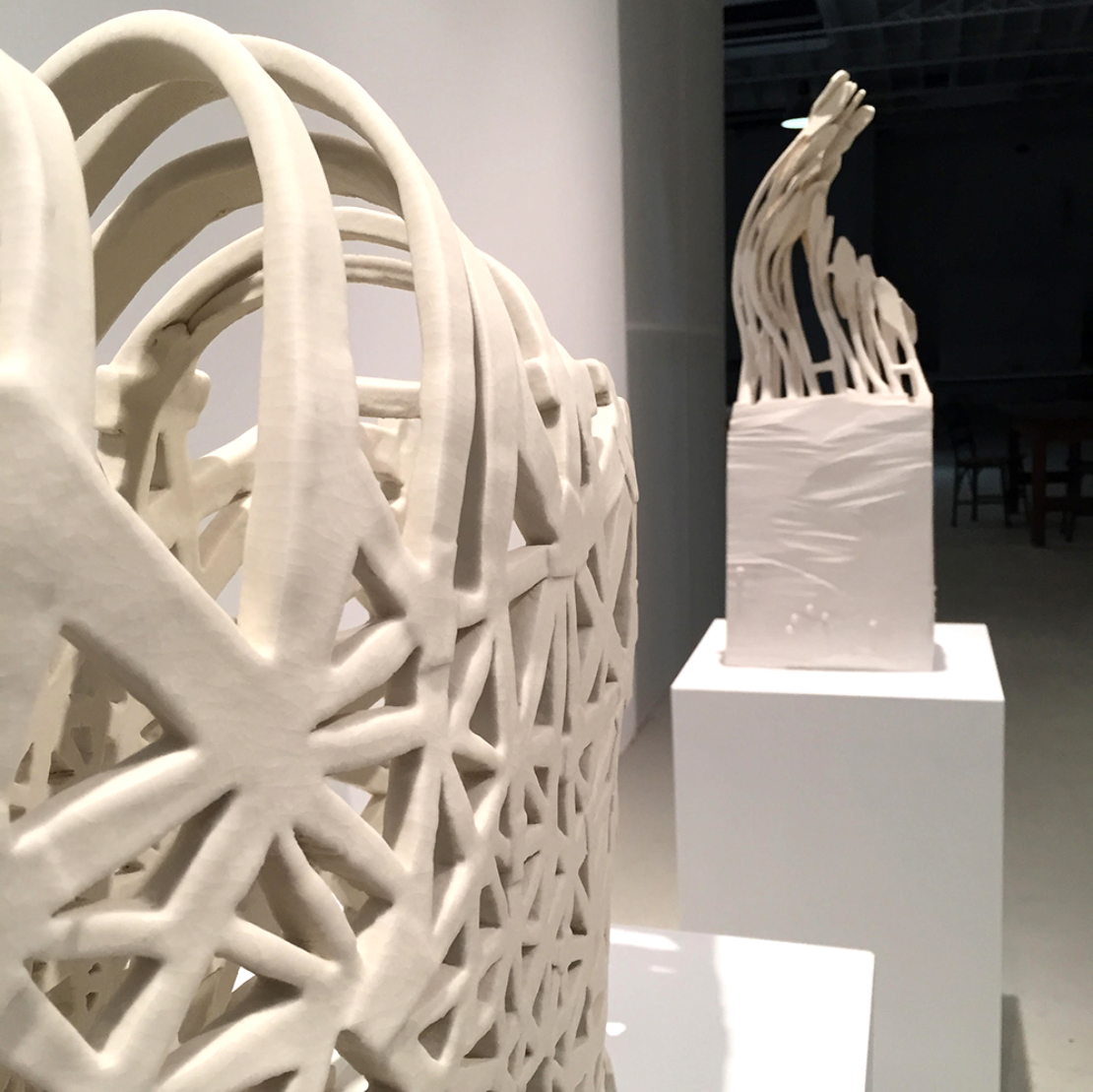SSNYC-Artist in Residence Exhibit
Josef Zutelgte
2016 Fellowship Award Recipient
February 10th - March 4th 2017
Hours: Saturdays 12pm-6pm & by appointment
Location: 47-21 35th Street, Long Island City, NY 11101
“Balancing Act” Sculptural Works, 2016
Josef Zutelgte’s first explorations with clay challenge the material and his usual working methods. His sculptures are delicate structures that reflect the current conditions of our world—more and more dependent on an intricate web of critically supporting systems. Strengths and vulnerabilities are interconnected, and the slightest shifts can bring about unanticipated changes or even cause a system to collapse.
Whether it is political, ecological, economical, technological or social, the failure of or damage to a system’s infrastructure is a prominent issue of our times, because the impact can be broad and extreme, and can reverberate effects in many other areas—so far is the reach of interconnectedness. Advances in one area can enable innovations in another, just as breaches and abuses can produce a domino effect of widespread destabilizing changes. The interconnectedness is both beautiful and frightening, because it is not always predictable.
Clay is a material that embodies these characteristics, and Zutelgte’s structures underscore this fragility. The moist clay is pliable and full of possibilities, but it is structurally weak. When it dries, the structure firms up, but also becomes brittle, fragile, and resistant to change. The final firing process creates strength but does not guarantee the desired result. Like most systems, organic and inorganic, the structure and the added element are interdependent, but not predictable. Often the structure takes on a new form and functions in an unanticipated way. It is in this critical stage, that discovery and innovation can occur— and the survival and success of the work hangs in the balance.
From volcanoes to birds to airplanes and satellites, the systems of our world develop. And as Darwin’s “Tangled Bank” contemplated how the earth’s elaborately constructed forms, so different from each other, are yet dependent upon one another in such complex ways, we must recognize that our modern interconnectedness demands a great responsibility. A political partner can become a destabilizing power; the miracle of medical cures can accidentally create antibiotic resistant bacteria; global corporations can have dramatic cultural and ecological impacts. The beauty and benefits of each innovation can create unforeseen shifts—survival is a balancing act. Without that balance, the tangled bank becomes an entangled bank; with it “endless forms, most beautiful and most wonderful” can evolve.
Zutelgte’s work seeks to remind us that we are not apart from but very much part of the web of interdependence and that, as Darwin wrote “... there is grandeur in this view of life.”



